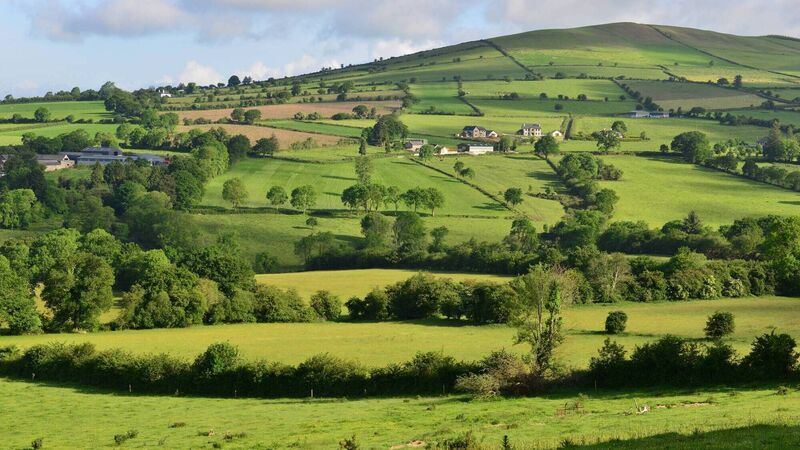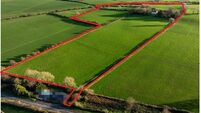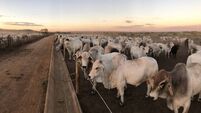Quarter of applications to change field boundaries are rejected

Screening by the DAFM is required for removing more than 500 metres of field boundary.
Applications for permission to restructure farms, or remove field boundaries have fallen from more than 100 per year before 2016 to well under 100, and as low as 54 in the year to April 2021.
The reduction in Environmental Impact Assessment (EIA) applications may point to reduced land reclamation work. However, farmers may also have been dissuaded by high rejection rates for their project applications. In the year to April 2021, the last period for which EIA outcomes were published, there was a rejection rate of about 25%.
This compared to about 12% in the two previous years, and between 6% and 8% in 2016, 2014, 2013, and 2012. However there was an 11% refusal rate in 2015.
The European Communities (Environmental Impact Assessment) (Agriculture) Regulations 2011 came into effect in September, 2011.
They apply to restructuring of farms, commencing to use uncultivated land or semi-natural areas for intensive agriculture, and farmland drainage.
Many of these projects must be assessed before they can proceed.
The Department of Agriculture, Food and the Marine (DAFM) examines the proposed activities for environmental impact. If they are likely to have a significant effect on the environment, a full EIA is required.
Rejection of projects has been much higher in some counties than in others.
Of the nearly 1,000 land projects which farmers nationwide sought permission for since 2012, about 800 were approved.
However, only nine out of 20 were approved in Co Clare. Only five out of 10 were approved in Co Donegal. There were 52 applications in Co Galway, but only 27 approvals. Only 18 out of 28 were approved in Co Kerry. In Co Mayo, only 34 out of 53 were approved.
In other Munster counties, there were 123 applications for farm projects in Co Cork, and 95 got the green light. Farmers in Co Limerick made 12 applications, and eight were approved.
The success rate was 80 out of 91 in Co Tipperary, and 42 out of 46 in Co Waterford.
The county with the largest number of applications was Wexford, and 163 out of 175 applications were approved.
Screening by the DAFM is required for removing more than 500 metres of field boundary, for restructuring more than five hectares by removal of field boundaries, for recontouring more than two hectares, for commencing to use more than five hectares of uncultivated land, or for draining more than 15 hectares. (Examples of re-contouring are levelling off hills or infilling hollows by removing or shifting earth or rock that originates from within the farm-holding).
Projects near natural heritage areas (NHAs) or nature reserves must also be screened, as must any proposed activity that may have a significant effect on the environment or on an archaeological monument.
If you have doubts that any works you propose to carry out may be subject to the requirements of the Regulations, you should apply to DAFM for screening.
Wetlands are not covered by the EIA (Agriculture) Regulations, but planning permission is required for drainage or reclamation of wetlands in excess of 0.1 hectares (or below that if having a significant effect on the environment).
DAFM approval is not needed for maintenance work on existing stone walls and hedgerows, removal of post and wire fencing, nor for cleaning existing open drains. Controlling vegetation such as invading briars does not require DAFM approval If the proposed activity is identified as ‘requiring consent’ or is a ‘notifiable action’ in a European site (Special Area of Conservation or Special Protected Area), or an NHA, the National Parks and Wildlife Service may direct you to apply to DAFM for screening.
A Department official may arrange to visit if you apply, a decision from DAFM will issue generally within four weeks. If permission is not granted, and you wish to proceed with the proposed activity, a full Environmental Impact Assessment will be required.
The EIA Guidance Document and Application Form is available from all local DAFM offices and the DAFM website, and from local Teagasc or agricultural consultant offices.
The Department of Agriculture, Food and the Marine will shortly commence a full review of the regulations and their implementation, said Agriculture Minister Charlie McConalogue recently in Dáil Éireann, replying to a question from Wicklow Social Democrats TD Jennifer Whitmore.













